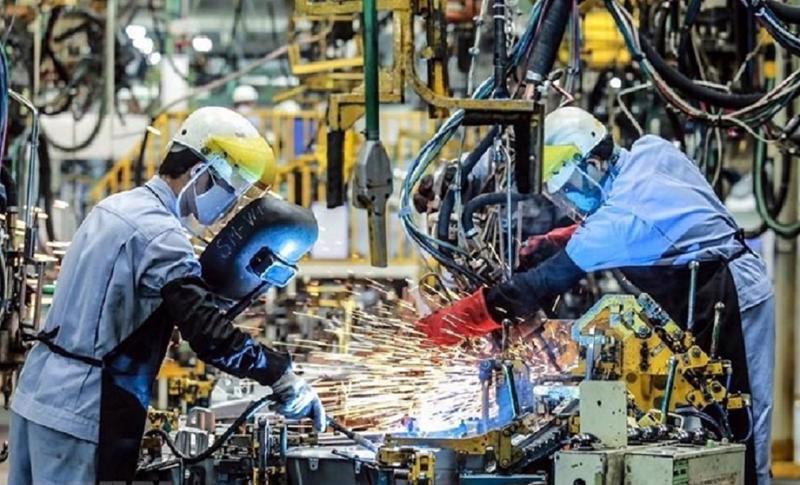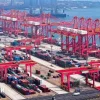Industrial production: Driving force for economic growth
Industrial production has played a key role in Vietnam’s economic recovery throughout 2024, with growth fueled by strong government support, sectoral shifts, and global integration.

Despite facing significant hurdles in 2024, including sluggish global economic growth that impacted its export orders and a slow recovery in domestic demand due to storms and natural disasters, particularly Typhoon Yagi, Vietnam’s industrial production has posted an impressive comeback and continues to be the driving force behind the broader economic recovery.
According to the Ministry of Industry and Trade (MoIT), industrial production surged 8.4 per cent year-on-year in the first eleven months of 2024, marking the highest growth since 2020. With this strong momentum, the full-year Index of Industrial Production (IIP) is expected to exceed 8 per cent, surpassing the initial target of 7-8 per cent.
Swift and widespread recovery
Reflecting on outcomes in industrial production for 2024, Mr. Pham Tuan Anh, Deputy Director of the Industrial Department at MoIT, attributed the recovery to the effectiveness of government support measures, the Prime Minister’s decisive leadership in public investment capital disbursement, the implementation of key industrial projects, and the successful attraction of promising FDI. The capabilities of domestic businesses have also improved. Moreover, aggressive efforts to expand markets and boost exports have been crucial, enabling the industrial sector to recover quickly and broadly, acting as a key driver for the country’s economic growth.
The industrial structure experienced positive shifts towards modernization during the year, leveraging advanced technologies, enhancing value-added production, and fostering sustainable growth. The proportion of the manufacturing and processing industry, a key indicator of industrial progress, rose significantly, to 24.1 per cent, meeting the targets set under Government Resolution No. 01. Conversely, the share of mining industries declined. Manufacturing and processing now serve as the growth engine for both the industrial sector and the broader economy after exhibiting strong growth.
Core industrial sectors continued to thrive, including oil and gas extraction, mining, electricity, electronics, telecommunications, information technology, metallurgy, steel, cement, building materials, textiles, footwear, mechanical engineering, automotive, and motorcycles. These industries provide a solid foundation for long-term growth and play a critical role in the country’s industrialization and modernization process.
Several export-driven industries, such as textiles, footwear, and electronics, have successfully integrated into global value chains, gaining greater competitiveness and securing a strong position in international markets. Many products from these three industries have earned top rankings in export value, both regionally and globally. Fundamental industries, such as steel, chemicals, and mechanical manufacturing, have gradually met the demand for materials and production capacity within the economy. Additionally, the defense industry has begun contributing to the national industrial sector and supporting socio-economic development. Support industries and component production are beginning to take shape, enhancing localization rates and value-added content, while facilitating deeper integration into global manufacturing networks.
Importantly, many localities have made significant efforts to overcome the challenges, revive production, and maintain strong industrial performance. The IIP has risen in 60 of Vietnam’s 63 centrally-run cities and provinces, with key industrial areas recovering rapidly and sustaining positive growth. Notable examples in the first eleven months of 2024 include Bac Giang province (27.7 per cent), Vinh Phuc province (11.1 per cent), Hai Phong city (15.3 per cent), and Hai Duong province (13.9 per cent) in the north, Thanh Hoa (19.2 per cent) in the north-central region, Quang Nam (18.6 per cent) in the central region, and Ho Chi Minh City (7.1 per cent), Binh Duong province (6.8 per cent), and Dong Nai province (8 per cent) in the south.
Despite these positive developments, Deputy Minister of Industry and Trade Phan Thi Thang pointed out that industrial enterprises still face several challenges, such as limited access to capital, even with falling interest rates. Rising costs for imported raw materials and a high USD exchange rate have diminished the competitiveness of many export products. Furthermore, the domestic production sector remains largely reliant upon imported materials.
There is also still limited business collaboration both within industries and across sectors. The low level of links between FDI enterprises and domestic companies has hindered the development of management skills, technology transfer, and the creation of material supply chains and industry clusters. Domestic companies have yet to significantly increase their participation in global production and supply chains.
Striving for greater goals
2025 holds special significance, as it marks the final year of the 2021-2025 Socio-economic Development Plan, setting the foundation for Vietnam to confidently enter a new era of prosperity and growth. Following the government’s recent directive, the Prime Minister has set an ambitious GDP growth target of 8 per cent for the new year. The MoIT has proposed raising growth targets in the industrial and trade sectors for 2025, to be incorporated into Government Resolution No. 01/NQ-CP, which was issued on January 8, 2025, outlining key tasks and solutions for implementing the socio-economic development plan and State budget for 2025. Specifically, the IIP is to grow 9-10 per cent compared to 2024.
However, achieving this target remains challenging. As Deputy Minister Thang noted, despite the positive developments, 2025 will continue to present numerous challenges for both the economy and the industrial sector, including the incomplete recovery of industrial production and slower growth in the domestic market.
To meet and exceed the industry’s targets for 2025, the MoIT will focus on four core solutions.
First, it will continue to deepen its understanding and ensure the effective implementation of Party policies, National Assembly (NA) resolutions, and government directives. An urgent action plan will be developed, and tasks outlined in Government Resolution No. 01 will be executed from the start of the year, contributing to the successful implementation of national programs and objectives.
Second, institutional and policy development will remain a key priority. The ministry will fast-track the implementation of the amended Law on Electricity and other major policies approved by the NA, including the restart of the Ninh Thuan nuclear power projects. The MoIT will also finalize legal documents, to be submitted to the Government for promulgation, to guide the implementation of the amended Law on Electricity, complete a draft Law on Chemicals for NA approval, and propose legislation on Key Industrial Development and Efficient Energy Use in 2025.
Focus will also be placed on refining State management mechanisms for industrial development, minimizing overlaps, ensuring stability, and fostering a favorable environment for industrial investment. Policies will be enhanced to attract both domestic and foreign investments, with an emphasis on drawing large multinational corporations into critical national projects.
Third, the ministry will work to improve the efficiency and competitiveness of industrial enterprises. The focus will be on continuing the restructuring of the industrial sector, State-owned enterprises (SOEs), and economic groups in line with approved plans. Efforts will be made to create mechanisms that support the growth of industrial companies, particularly those in the support industries. The MoIT will also facilitate stronger links between Vietnamese industrial businesses and foreign partners to boost investment and collaboration.
And fourth, the ministry will actively provide advice on reviewing policies related to international economic integration, with a particular emphasis on attracting FDI in the industrial and trade sectors. Solutions will be proposed to encourage foreign companies to support and collaborate with domestic businesses, fostering technology transfer, developing management skills, and establishing supply chains that will enhance the competitiveness of Vietnamese companies and enable them to integrate into global production and supply networks.
Source: en.vneconomy




